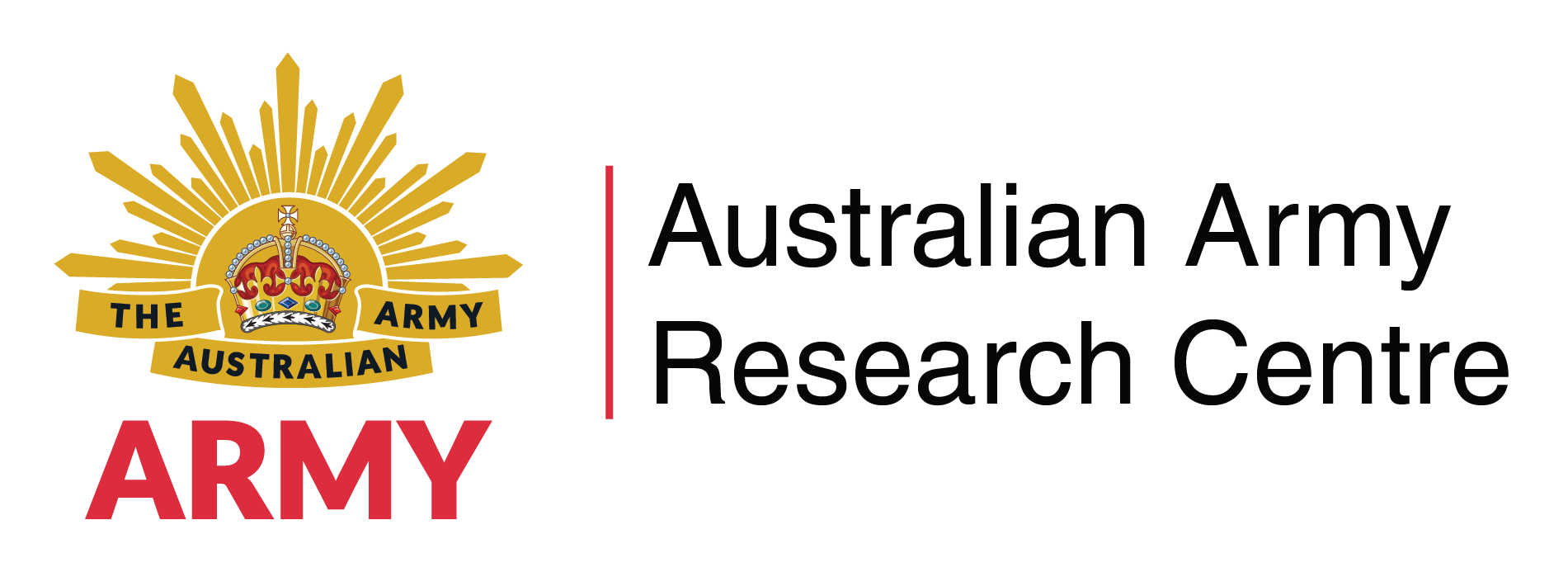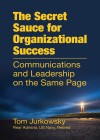Communications and Leadership on the Same Page
Air University Press, 2020, 148 pp, Open Access
Written By: Tom Jurkowsky
Reviewed By: Ellen Bloxsome
The Secret Sauce for Organizational Success: Communications and Leadership on the Same Page is a text about military and organisational public affairs that reads like a fireside chat or a collection of ‘warries’. [1] The author, Rear Admiral Tom Jurkowsky (Retd.), served in United States’ Navy as a public affairs’ specialist and later held a number of corporate roles. This book shows that organisations can deliver stakeholder benefits and enhance their reputation through relationships with the media, supported by the ‘secret sauce’ of strong organisational leadership. The format combines anecdotes and case studies from the Navy, defence industry and government, with history, and practitioner insights. While not strictly a textbook, there is a ‘takeaway’ at the conclusion of each chapter to reiterate key points.
The organisation of content is both broadly chronological and thematic, with early chapters drawing principally from Jurkowsky’s Navy service. Jurkowsky begins the text by baselining his early experiences in Navy public affairs shortly after the Vietnam War. He describes a landscape of negative public opinion towards the military, a reduced defence budget, and media-military communications constrained by poor information flows and low trust. The chapter identifies that military attitudes to media relations evolved into the mid-1990s but tensions were never wholly mitigated. This chapter puts several of Jurkowsky’s values up front (openness, integrity, timely action, accountable leadership) and these recur throughout the book. Chapter 2 briefly outlines the two-day U.S. ‘Navy Safety Stand-down’ in November 1989 that followed a series of serious accidents that year. Jurkowsky was involved in the messaging around the stand-down and he demonstrates his ability to control the narrative, guide leaders to be visible and maintain trust through transparency. The third chapter elaborates on the infamous Tailhook Scandal of 1991 which involved widespread sexual harassment and assaults at the annual convention for U.S. naval aviators. Jurkowsky introduces the case by exploring different Navy communities and the unique context of ‘tailhookers’ – fast jet carrier pilots. Jurkowsky admits that the conditions contributing to the scandal were well-known years prior, and then elaborates on the failures and effects of the investigations that followed.[2] Tailhook ’91 was a substantial public affairs case and remains relevant in current discussions on military sexual assaults, military culture, and the integration of women in the military and combat roles.[3] Jurkowsky’s consideration of the Tailhook scandal through a public affairs lens, while not unique, is something of an outlier.
It is a notable feature of Jurkowsky’s writing that he is a close observer of military values. He is staunchly critical of clear failures of leadership that contributed to negative public impressions and effects on morale in the Tailhook case. On more nuanced points, he is less didactic, placing examples of well-executed public affairs’ practice and military values in close proximity to the obverse. Perhaps obliquely, he raises the spectre of military exceptionalism in his opening discussion of Navy communities, but there is no direct discussion.[4] Later, in chapter 8, when referring to the alleged rape of a U.S. Navy sailor during a Soviet Navy visit, Jurkowsky notes that media coverage “marred an otherwise diplomatically successful” event. Elsewhere in the same chapter, he describes the tactics used to prevent reputation risk spillover from embedded media during a reciprocal visit. These incidents occurred at the end of the Cold War, a context which obviously influenced the PA operational landscape.[5] This disparate series of anecdotes highlights the difficulties for public affairs practice, which may be driven by values and principles, but operates across the strategic spectrum.
Jurkowsky discusses a variety of cases in the other chapters. He refers to business operations at the U.S. Mint in chapter 4 where both economic and political influences have a role in decision-making. Linking the lack of strong operational leadership to courage highlights the delicate balance where leaders struggle to implement optimal solutions in a contested space. In the same chapter, he emphasises the public’s right to know against tendencies to tell convenient lies or to obfuscate. He explains this concept through the context of the US Navy discharge of chaff over San Diego, causing a widespread power blackout. Chapters 5 and 6 are devoted to the U.S. Naval Academy where the work to develop future leaders occurs in proximity to government and attracts strong media scrutiny; the public affairs challenges described here will resonate for readers familiar with training establishments. Chapter 7 summarises the stock-price effect for Lockheed Martin when the re-baselining of the Joint Strike Fighter project was misreported in 2004. This is an interesting case that identifies risks within Defence industry of media messaging around complex projects. He advocates building trust and taking well managed risks in chapter 9. In Chapter 10 Jurkowsky promotes the importance of lawyers in the public affairs function, and simultaneously provides an example of poor management. While the case study selected demonstrates what happens when teams rigidly adhere to their own code, inadvertently, perhaps, it will also likely leave the reader asking “…and then what?”. He provides a checklist for crisis communication in chapter 12, and tips for dealing with the media in chapters 13 and 14.
Chapter 11 aims to provide the “secret sauce” of the book; a view of organisational leadership. It begins with an anecdote about Dorothy Lessing. A Nobel Prize winning author with strong social values. It then provides the text of a poster outlining the differences between a “boss” and a “leader”. Jurkowsky next provides the principles developed by Admiral Larson at the U.S. Naval Academy, followed by his own leadership principles. There is substantial repetition of ideas across the sources, which vouches for the consistency of the author and content throughout the book. Most points are irrefutable. However, as the central tenet of the book, this is the chapter where the author needed to work more to bind the threads of the narrative into a cloth, or the ingredients into a sauce. The opportunity to provide a coherent view of leadership, informed by more than embedded learning or “warries”, is absent here.
Military public affairs is a niche field with few extant reference texts. Those that exist provide either substantial historical analysis of a single context delimited by time,[6] or they provide a military practitioner’s guide to the operating environment and processes[7]. Jurkowsky’s text is not profoundly theoretical, nor does it map processes and logic. Instead, it combines public affairs case studies from both military and commercial contexts with solutions, values and a strong service motif. It will prompt the reader to recognise the broad scope of military contexts that may come under the lens of public affairs. It should also encourage the public affairs practitioner to consider tactics used for reputation management, the media frames applied to military organisations, and the agenda-setting function of media. Many of these topics can be found buried in academic journals and theses, but are useful for understanding political and strategic landscapes.[8] The value in this book is not the guidance on what leadership looks like in military public affairs, instead, its real value is in the resonance of the takeaways that the author has learned from – and integrated into his practice – and the encouragement of the reader to engage broadly, and do the same.
About the Reviewer
Dr Ellen Bloxsome is a Research Officer in the Directorate of People Intelligence and Research. She contributes to the YourSay Workplace Experience survey and knowledge translation projects. Ellen holds degrees in Sociology and Business and maintains ongoing research interests in image transfer, reputation management and news values.
Endnotes
[1] Tom Jurkowsky, The Secret Sauce for Organizational Success: Communications and Leadership on the Same Page. (Air University Press, 2020). Jurkowsky differentiates between public affairs and public relations early in the book, noting that ‘public affairs’ is appropriate for government (and military) functions where public accountability and communication are key, as opposed to image building in corporate settings (public relations). Jurkowsky has performed government, military and corporate roles, so his cases span both public relations and public affairs; for simplicity public affairs (PA) will be used throughout this review.
[2] See, for example, Department of Defense, Tailhook 91, Part 1, Review of the Navy Investigations. Office of the Inspector General, September 1992. https://ncisahistory.org/wp-content/uploads/2017/07/DoDIG-Report-of-Inv…
[3] See, for example: Megan Mackenzie and Ben Wadham, “Is the problem with military culture one of bad apples or bad orchards?: war crimes, scandals and persistent dysfunction”, Australian Journal of Political Science 58, no.3 (2023): 298; Carolyn M. Warner and Mia A. Armstrong, “The Role of Military Law and Systemic Issues in the Military’s Handling of Sexual Assault Cases”, Law & Society Review 54, no. 1 (2020): 265; Kingsley R. Browne, “Military Sex Scandals from Tailhook to the Present: The Cure can be Worse than the Disease,” Duke Journal of Gender, Law & Policy, 14 (2007): 749.
[4] Risa Brooks & Sharan Grewal, “Twice the Citizen”: How Military Attitudes of Superiority Undermine Civilian Control in the United States.” Journal of Conflict Resolution 66 (2022): 623.
[5] Jurkowsky, The Secret Sauce, 67.
[6] See: William M Hammond, Public Affairs: The Military and the Media, 1968-1973. Center of Military History, United States Army (1996).
[7] For example: Bob Pritchard, Mari K Eder, Kim M Malone, Matthew Kroll, Katie Cousins & Skye Martin, Public Relations in the Military: The Scope, Dynamic, and Future of Military Communications. (Business Expert Press, 2022).
[8] See, for instance: Brittany Carlson, “Exploring News Framing in Military-Oriented Newspapers.” M. Arts Diss., University of Missouri-Columbia, 2017.; Kimberly S. Leone, “Identity Crisis: The Role of Organizational Culture in Defining Public Affairs and its Roles, Missions, and Value in the United States Marine Corps.” M. Arts Diss., University of Missouri-Columbia, 2015; Alyson M. Teeter-Baker, “Constant Crisis: A Study of the U.S. Military’s Crisis Communication Program.” M. Science Diss., San Jose State University, 2008.



